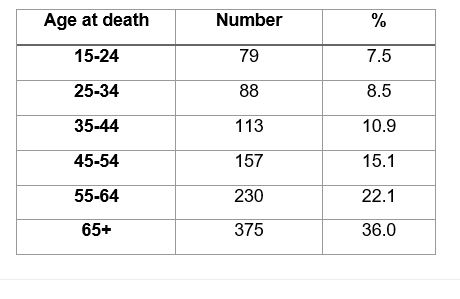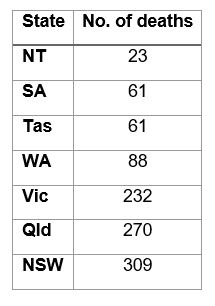Earlier this year, the Australian Journal of Rural Health published findings from research conducted into farm deaths across Australia from 2001-2020.
We already know from previous research that agriculture is a high-risk industry and that older farmers are known to be at increased risk of fatal injury.
We also know that farm vehicles and machinery have consistently been identified as trauma sources.

Current research provides for some sobering reading – here are some of the findings.
- There were 1,584 unintentional farm fatalities over the 20-year period – that’s an average of 79 deaths per year.
- Major agents of injury were farm vehicles (39%) and machinery (26%). Smaller burdens were associated with farm structures (11.4%), animals (8.2%) and the working environment (7.3%).
- Persons aged over 55 years were involved in 58% of all work-related incidents and were significantly more likely to die than younger cohorts when assessed against hours worked.

There are significant variations in the rates of fatal farm injuries when examined by state, with South Australia the lowest per capita, the Northern Territory highest and Tasmania also having an elevated rate.


The researchers made the following observations and conclusions:
- Progress on reducing the fatal injury burden has stagnated during the past 20 years
- As Australian farms are predominantly family-owned businesses and frequently serve as both a residence and a workplace, this increases potential risks to those in the environment, including family members and visitors.
- While agricultural outputs continue to grow in Australia, there is a need to reinvigorate steps to reduce farm deaths and injuries.
- There is a disproportionate burden associated with farm vehicles and machinery that requires addressing.
- Similarly, the representation of older persons (55+ years) in the data, in conjunction with an ageing farmer population, provides a clear focus for attention.
- Failure to directly address these issues will result in little to no improvement in the health and safety record for the agricultural sector, which has significant impacts on individuals, families, businesses and whole communities.
Farm-related injury deaths in Australia (2001–20)
Tony Lower PhD, Kerri-Lynn Peachey BAS, Margaret Rolfe PhD
First published: 25 July 2022
https://doi.org/10.1111/ajr.12906
Further to this research, data published by Farmsafe Australia (Safer Farms 2022 – Agricultural Injury and Fatality Trend Report) reveals that in both 2019 and 2020 we lost 58 lives respectively on Australian farms.
In 2021, a total of 46 adult lives were lost on Australian farms – the first time since 2010 that on-farm fatality statistics were below 50.
The message from Farmsafe Australia is that we all need to keep working to reduce that number. We all need to keep advocating for safer practices, educating as many farmers and members of the farming community as we can.
For more resources on farm safety go to https://farmsafe.org.au/
In related news, the Grains Research and Development Corporation (GRDC) has cautioned growers over the risks associated with harvesting crops in wet conditions.
This year compounding issues such as weather events and labour shortages will mean farmers and workers will be facing longer hours in wet conditions with an elevated risk of machinery getting bogged.
The GRDC is recommending growers look at a safety plan and know the best way to recover machinery to reduce the risk of death or injury (Source: Grain Central, https://campaigns.generator.com.au/t/r-l-tjjhkddt-bzlljujky-g/)
